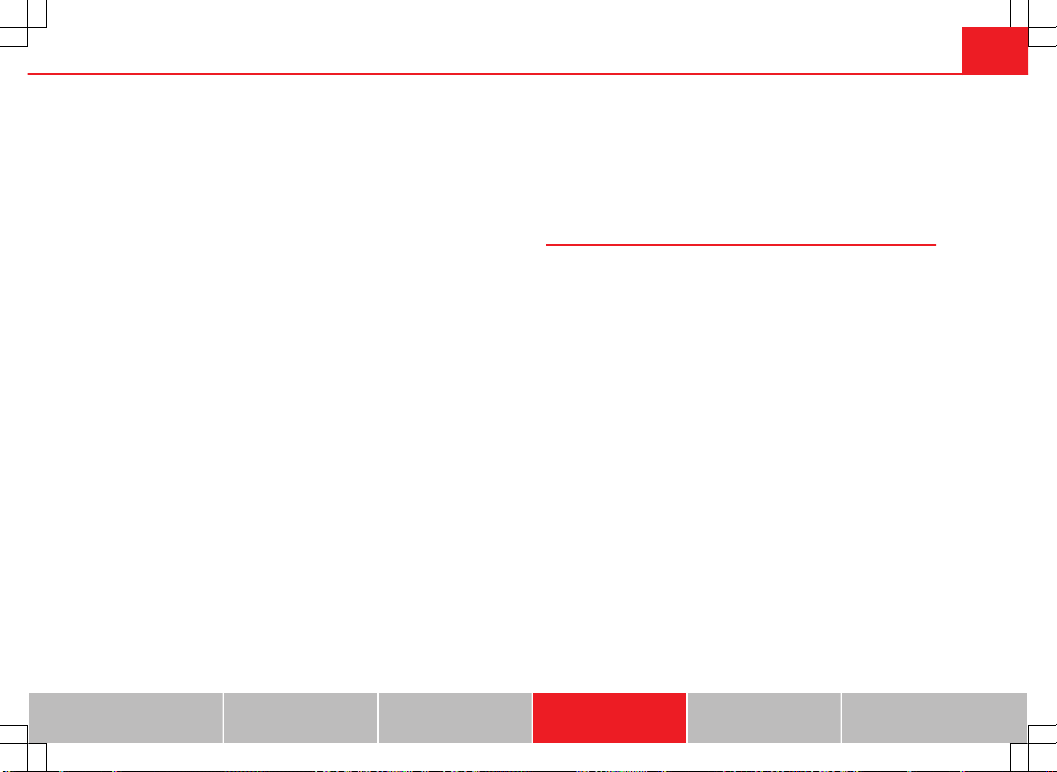Loading ...
Loading ...
Loading ...

227Vehicle care and maintenance
In vehicles equipped with an emergency call function via the mobile tele-
phone or other appliances connected in the vehicle, it is possible to send
the vehicle position. If the control unit records an accident with airbag acti-
vation, the system may automatically send a signal. This will depend on the
network operator. Normally, transmission is only possible in areas with
good coverage.
Event Data Recorder
The vehicle is not fitted with an event data recorder.
An event data recorder temporarily stores the vehicle information. There-
fore, in the event of accident, it is possible to obtain detailed information
about how the accident occurred. For example, in vehicles with airbag sys-
tems, data relating to speed of impact, seat belt status, seat positions and
airbag activation times may be stored. The volume of data depends on the
manufacturer.
Event data recorders can only be mounted with authorisation from the vehi-
cle owner and, in some countries, they are governed by local legislation.
Reprogramming control units
On the whole, all the data required for the component management is stor-
ed in the control units. The programming of certain convenience functions,
such as the convenience indicators, individual door opening and instruc-
tions on the display can be modified using special equipment at the work-
shop. If the comfort functions are reprogrammed, the information and In-
struction Manual descriptions will not coincide with the modified functions.
Therefore, SEAT recommends that any modifications are recorded in the sec-
tion “Other workshop notes” in the Maintenance Programme.
The SEAT Official Service must have a record of any modification to the pro-
gramming.
Reading the vehicle fault memory
There is a diagnostics connector in the vehicle interior for reading the vehi-
cle fault memory. The fault memory documents errors and deviations from
the theoretical values of the electronic control units.
The diagnostics connector is in the driver side footwell area, next to the lev-
er for opening the bonnet, below a cover.
The fault memory should only be read and reset by a Specialised workshop.
Using a mobile telephone in a vehicle without connection
to an exterior aerial
Mobile telephones transmit and receive radio waves also called high-fre-
quency energy, both when in use and when on stand-by. Scientific studies
state that radio waves exceeding certain values may be harmful to the hu-
man body. International committees and authorities have established limits
and directives in order to ensure electromagnetic radiation from mobile
phones remains within certain limits that do not endanger human health.
However, there is no available conclusive scientific evidence that cordless
phones are completely safe.
That is why some experts recommend moderate use of the mobile tele-
phone, and the appliance of measures to reduce radiation on the human
body.
When a mobile telephone not connected to an exterior aerial is used inside
the vehicle, the electromagnetic radiation may be greater than if the mobile
phone were connected to a built-in aerial or to another exterior aerial.
If the vehicle is fitted with a suitable hands-free device that allows the em-
ployment of numerous additional mobile telephone functions with compati-
ble Bluetooth technology
®
, it will comply with the legislation in many coun-
tries which only permits the use of mobile phones inside vehicles using a
hands-free device.
The hands-free system of the Portable Navigation System (supplied by
SEAT) has been designed for use with conventional mobile phones and
phones with Bluetooth technology
®
⇒ page 229. Mobile telephones must
be placed in a suitable telephone support or stored safely in the vehicle. If a
support is used for the telephone, it must be securely fastened to the base
Vehicle diagram Prior to a journey... While driving Care, cleaning and mainte-
nance
If and when Technical Data
Loading ...
Loading ...
Loading ...